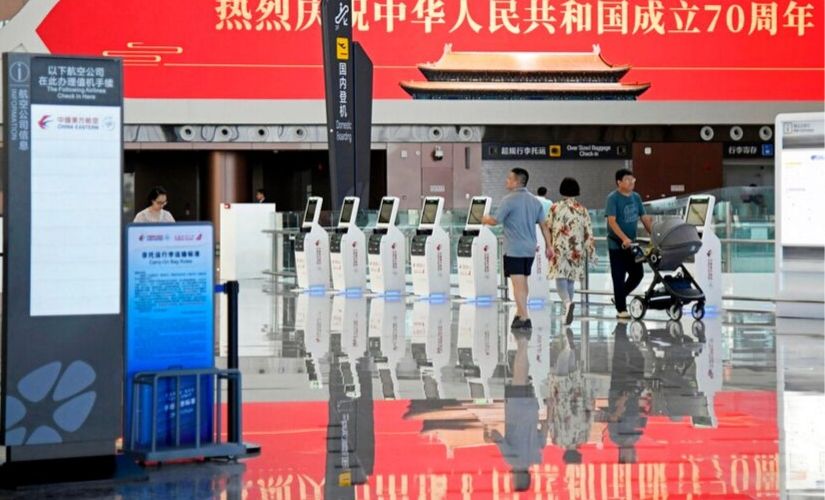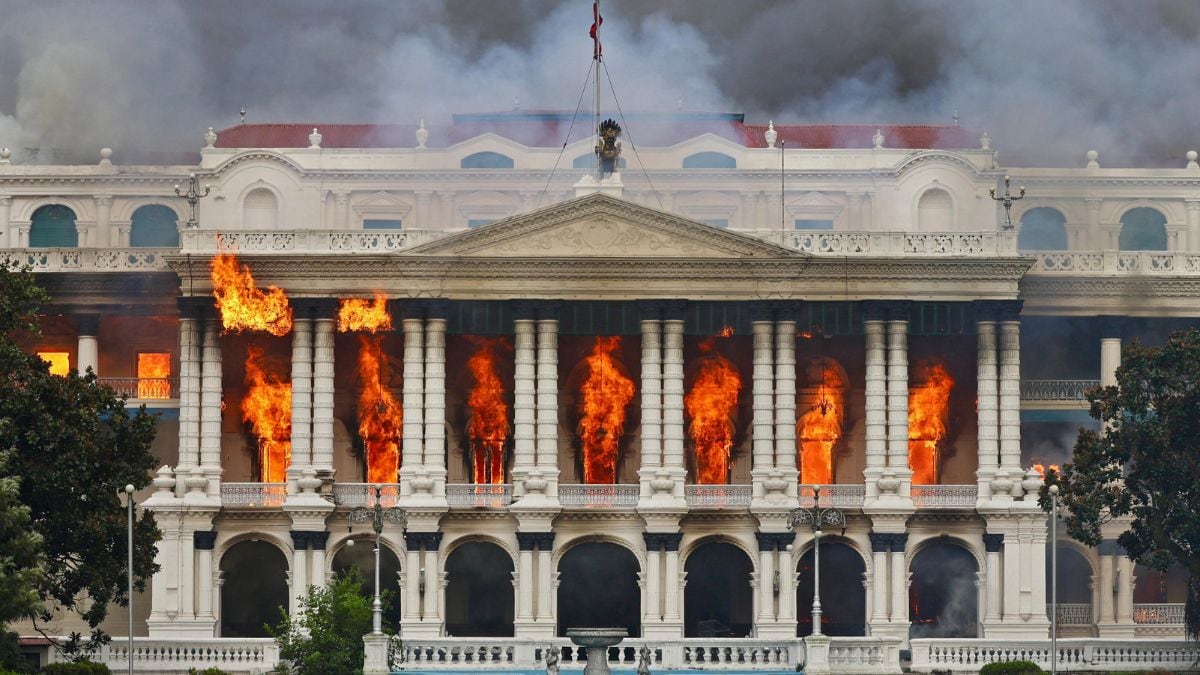China’s latest addition to its list of major infrastructural upgrades is the Daxing International Airport in Beijing, expected to become the world’s busiest airport at some point in the coming future. Chinese president Xi Jinping announced the official opening of the airport on Wednesday, four years after the construction began. Authorities believe that the airport — roughly the size of close to 100 football fields — will eventually have an inflow of 100 million passengers annually. Seven Chinese airlines launched their first flights from the new airport in the afternoon, and China Southern Airlines’ Airbus A380 was the first one of the lot.
#BREAKING The maiden flight of China Southern Airlines, an A380, took off from the Beijing Daxing International Airport at 16:23 on Wednesday to Guangzhou, capital of South China's Guangdong Province, signaling the official start of the new airport. pic.twitter.com/MOA2gFfpgg
— Global Times (@globaltimesnews) September 25, 2019
‘The starfish airport’
Daxing is Beijing’s second international airport and has been built to take the pressure off the overcrowded Beijing Capital International Airport, which often sees capacity constraints leading to issues like flight delays. Observers have said that Daxing airport, designed to resemble the mythological bird phoenix, is more reminiscent of a starfish. It was designed by the famed Iraqi-born architect Zaha Hadid, who passed away in 2016. It boasts four runways, with plans for as many as three more, and is expected to handle up to 72 million passengers a year by 2025 itself. According to reports, the project cost 80 billion yuan ($11.2 billion) and has one terminal — the world’s biggest at 1 million square metres. However, officials have claimed travellers will not have to walk more than 600 metres to reach any boarding gate and checkpoints. Located 46 kilometres south of the Tiananmen Square, the airport will operate at full capacity in 2040. The airport has been dubbed as one made for the future, as it has various technologically-advanced facilities like a facial recognition system for checking in passengers and automated bag-drop kiosks. Robots will be tasked with customer service jobs such as providing passengers with information. Besides the airport, China is also working on a network of high-speed rail, inter-city services and express trains, to connect the terminal with the downtown Beijing and neighbouring areas. [caption id=“attachment_7402531” align=“alignnone” width=“825”]  The departure lobby of the Daxing International Airport on Wednesday. Kyodo News via AP[/caption]
116 air routes to be opened
Reports have said that carriers including British Airways and state-owned China Southern, the country’s biggest airline by passengers, plan to move to Daxing from Beijing Capital International Airport. Domestic airlines Air China and China Eastern Airlines are also said to be vying for premium slots at Daxing. Global Times reported 16 airline companies will be stationed at the airport with the commencement of flight operations. A total of 116 air routes are expected to be opened, including 101 domestic and 15 global routes. A Business Traveller report claimed British Airways, Royal Brunei Airlines, Himalaya Airlines will begin operations on 27 October, while at least four other companies — LOT Polish, Finnair, Malaysia Airlines, Royal Air Maroc — are expected to start operating in the coming winter season. Earlier in September, the Civil Aviation Administration of China (CAAC) gave its approval to four Chinese airlines — China Eastern, China Southern, China United Airlines and Beijing Capital Airlines — for new international routes in the future. Xinhua reported that a total of 66 airlines applied to operate at the airport, 20 being domestic and 46 overseas.
China’s aviation industry and infrastructure
China, which has been witnessing rapid infrastructural growth in recent years, is expected to surpass the US to become the world’s largest aviation market by 2022. The country’s existing mega airports are generally reaching their capacity saturation points, with the number of Chinese travellers increasing due to improving living standard. In 2018, the CAAC had revealed the country’s plans to add 216 new airports by 2035 and develop some regional transport hubs. The demand for passenger transport in China will account for one-fourth of the world’s total by 2035, the CAAC had said. According to the Centre for Aviation, Chinese airlines expanded more rapidly in 2019 than foreign airlines. The International Air Transport Association has estimated that by 2037, China will have 1.6 billion plane journeys each year, a billion more than in 2017. Just days ahead of the 70th anniversary of the founding of the People’s Republic of China, Daxing was hailed as “a new powerful source of national development” at a ceremony overseen by Xi. A Global Times tweet said that the Daxing international air harbour also came under China’s Belt and Road Initiative (BRI). The BRI aims to closely connect the two ends of Eurasia, as well as Africa and Oceania, along overland and maritime routes. However, limited details are available as to which countries will be connected once various airlines begin operations in full swing. One major criticism Chinese airports have often faced is the number of flight delays, for which airspace management is largely to be blamed. This is mainly because civil aviation only accounts for as little as 20 percent of all traffic while the military controls 80 percent. Though the ambitious projects to build air harbours is a welcome move for passengers, it remains to be seen whether more airports will also result in increased efficiency. With inputs from agencies


)

)
)
)
)
)
)
)
)



